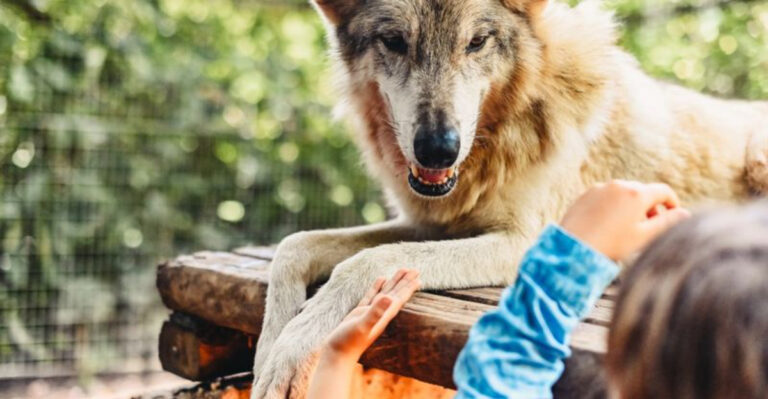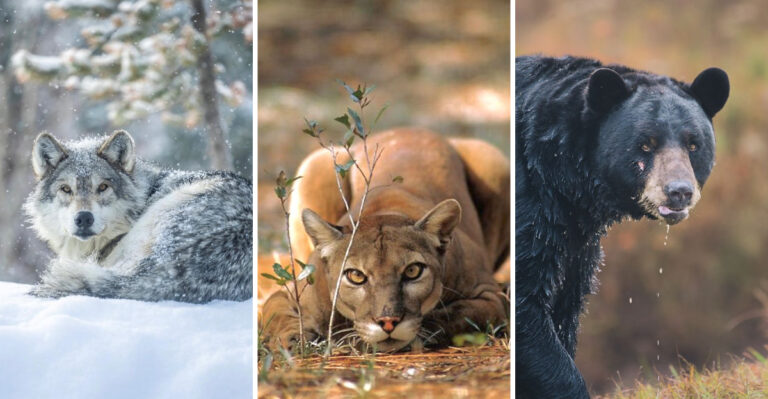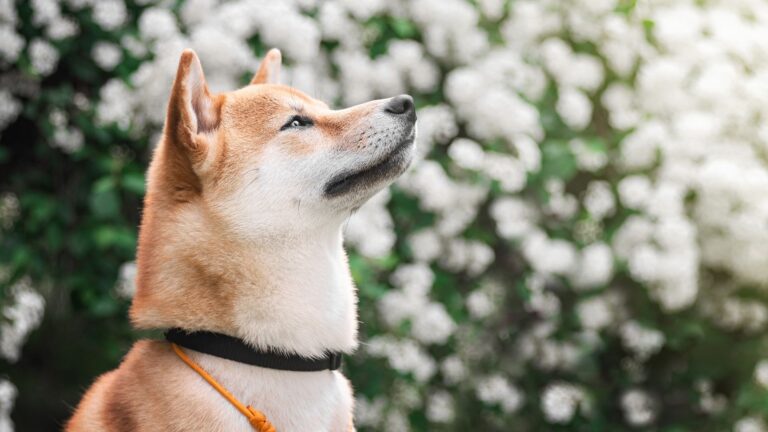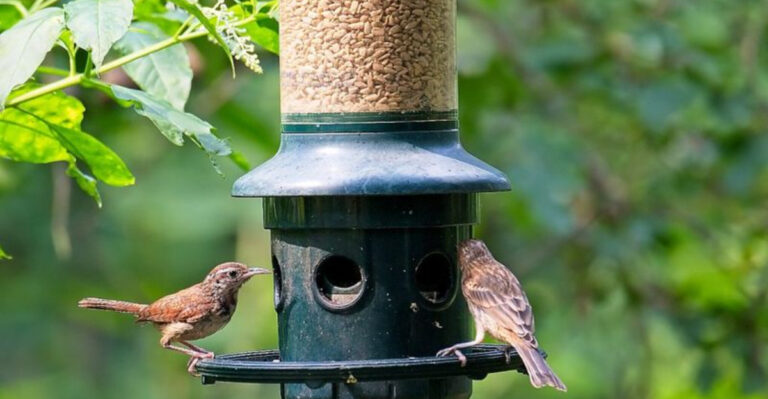Monkey Lifespans Might Surprise You More Than You Think
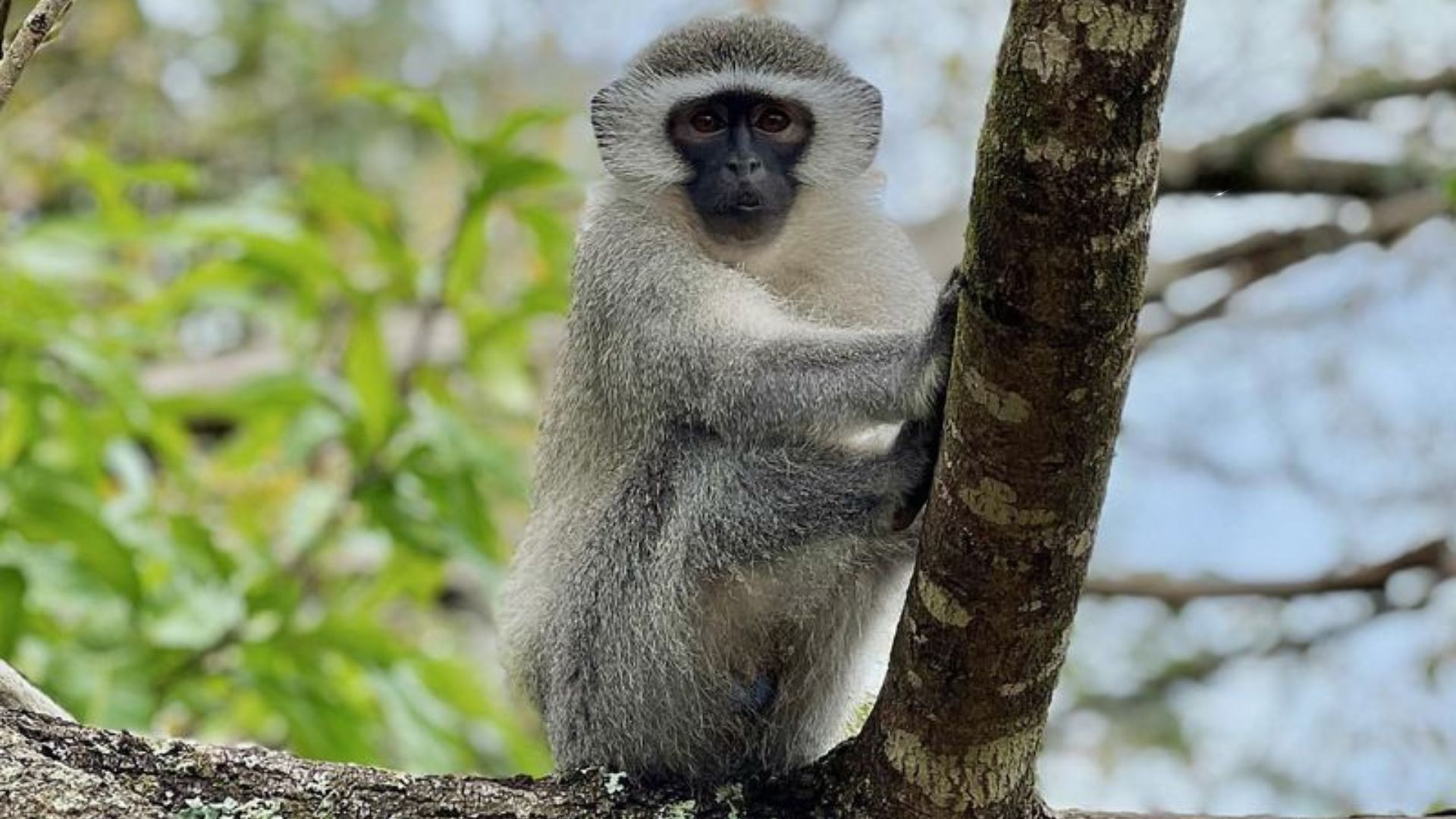
Monkeys are fascinating creatures that exhibit a wide variety of lifespans across different species. From the vibrant and social baboon to the distinctive proboscis monkey, each species offers unique characteristics that contribute to their longevity.
Let’s learn the average lifespan of different monkey species, exploring the factors that influence their longevity and what makes each species unique.
Whether it’s their habitat, diet, or social structures, these elements play a critical role in determining how long these intriguing animals live. Join us as we explore the lifespans of these remarkable primates.
1. Baboon
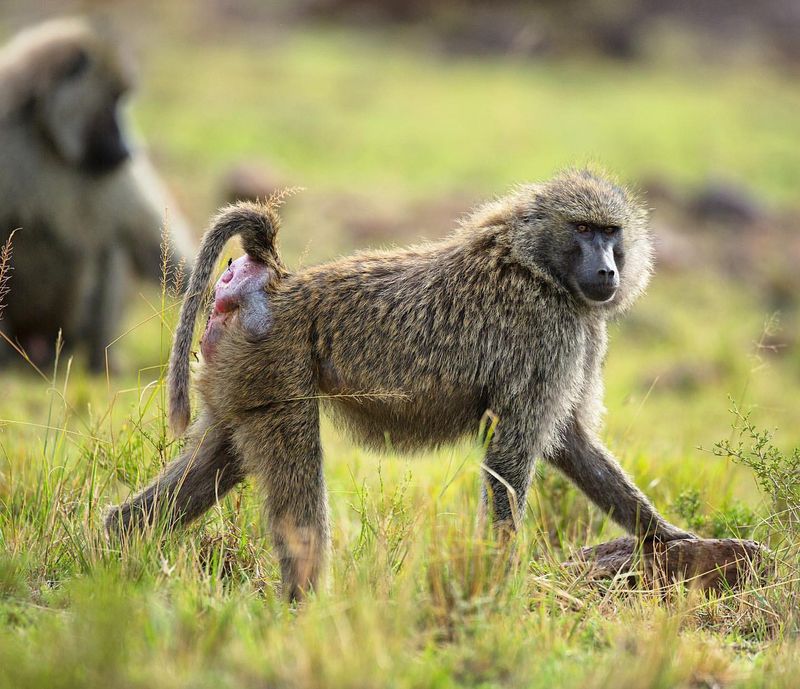
Baboons are one of the most recognizable primates, known for their social structures and expressive faces. These animals typically inhabit savannahs and open woodlands across Africa.
A baboon’s lifespan varies depending on environmental factors and social status, but generally, they live between 20 to 30 years in the wild. In captivity, they may reach up to 45 years, thanks to regular food supply and medical care.
The social hierarchy within baboon troops plays a significant role in their longevity. High-ranking individuals often enjoy better access to resources and mates, which can contribute to a longer life. Baboons are omnivorous creatures, feeding on fruits, seeds, and small animals, which provides them with necessary nutrients for survival.
Despite their robust appearance, baboons face threats from predators such as leopards and lions, and from human encroachment on their habitats. Conservation efforts are vital to ensure their continued survival in the wild. Understanding the complex lives of baboons provides insight into how environment and social structures influence the lifespan of these intriguing primates.
2. Macaque
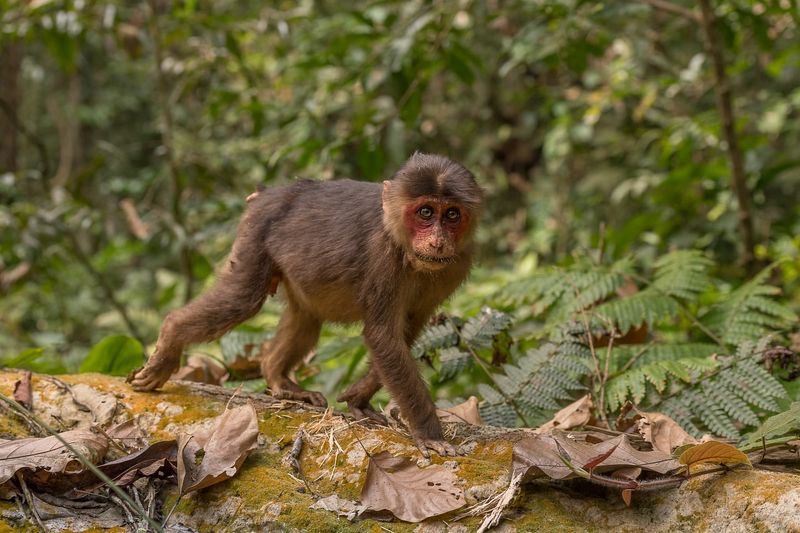
Macaques are highly adaptive primates found across Asia, known for their intelligence and ability to thrive in diverse environments. These monkeys exhibit a range of lifespans, typically living 20 to 30 years in the wild.
In captivity, their lifespan can extend up to 40 years, benefiting from better healthcare and nutrition. Macaques live in large social groups that are crucial for their survival, providing protection and collaboration in resource gathering.
Their diets are varied, consisting of fruits, leaves, seeds, and insects, ensuring a balanced intake of nutrients. This adaptability in feeding habits contributes significantly to their longevity. Human interaction is a double-edged sword for macaques.
While some communities protect them due to cultural reverence, others pose threats through habitat destruction and hunting. Conservation programs focus on preserving their natural habitats and mitigating human-wildlife conflicts. Understanding macaques’ adaptability offers valuable lessons in primate ecology and the impact of environmental changes on their lifespan.
3. Colobus Monkey
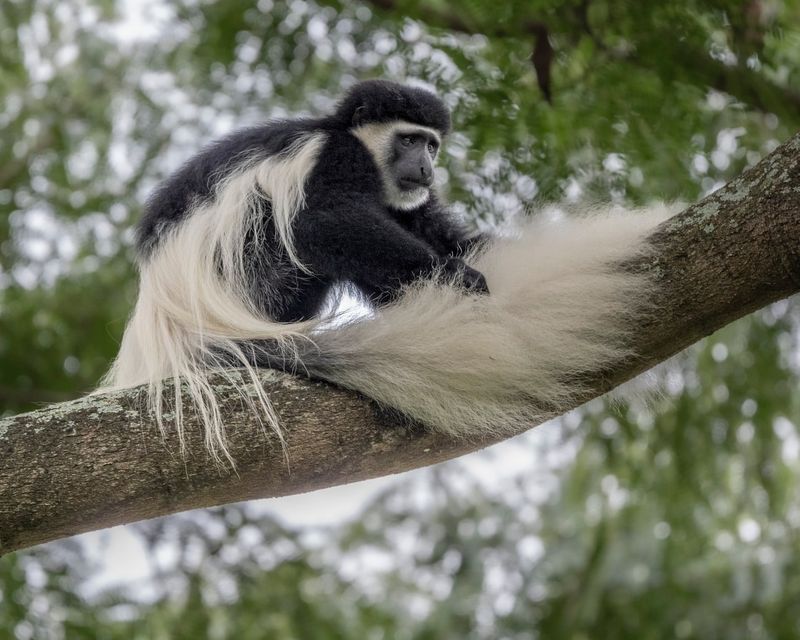
Colobus monkeys are recognized for their striking black and white coats and elongated tails. These monkeys are native to the forests of Africa and typically have a lifespan of about 20 years in the wild. In controlled environments like zoos, they can live slightly longer, often reaching up to 24 years.
These arboreal animals primarily feed on leaves, which is facilitated by their specialized stomachs capable of digesting fibrous plant materials. Their diet is a critical factor in their lifespan, as it provides essential nutrients and energy for survival.
Colobus monkeys live in small groups, which helps reduce competition for food and enhances social bonding. Predation and habitat loss are significant threats to colobus monkeys, leading to conservation efforts focused on protecting their forest habitats.
By studying colobus monkeys, researchers gain insights into the importance of diet and habitat conservation in extending the lifespans of these elegant primates.
4. Mandrill
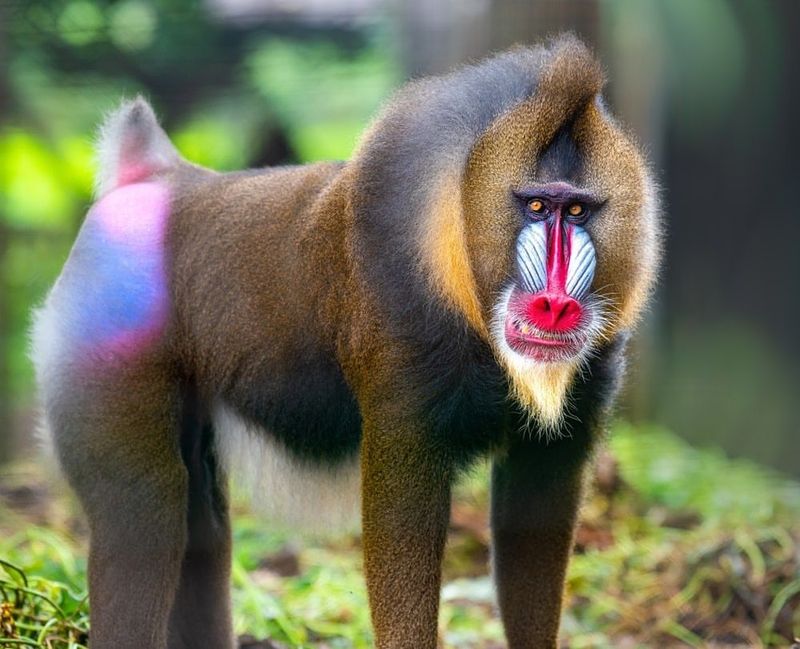
Mandrills are among the most colorful and distinctive of all primates, known for their vibrant blue and red facial markings. These monkeys inhabit the dense tropical rainforests of Central Africa and typically live around 20 years in the wild.
In captivity, they may live longer, often reaching 30 years due to improved living conditions. The social structure of mandrills is complex, with troops often comprising hundreds of individuals. This social system helps in predator detection and resource sharing, contributing to their survival and longevity.
Mandrills are omnivorous, with a diet that includes fruits, seeds, leaves, and small animals, ensuring a comprehensive nutritional profile. Human activity poses risks to mandrills through deforestation and hunting.
Conservation programs aim to protect their habitats and reduce human-induced threats. Understanding mandrills’ social structures and dietary habits provides valuable insights into factors influencing their lifespan and highlights the importance of environmental conservation.
5. Patas Monkey
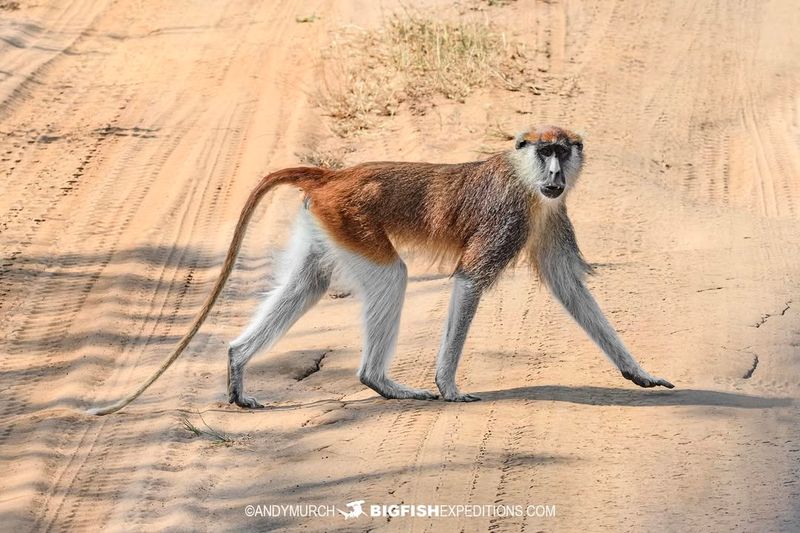
Patas monkeys are known for their speed and agility, often referred to as the “cheetahs of the primate world.” These terrestrial monkeys inhabit the savannahs and semi-arid regions of Africa and have a lifespan of about 15 to 20 years in the wild.
Their lifespan can extend slightly in captivity, with some individuals living up to 25 years. The fast-paced lifestyle of patas monkeys is supported by their unique physical adaptations, including long limbs and slender bodies, which enable them to outrun predators.
They live in small social groups that provide protection and aid in resource acquisition. Their diet mainly consists of insects, acacia seeds, and gum, offering a rich source of energy and nutrients. Environmental changes and human activities, such as agriculture and hunting, threaten their habitats.
Conservation efforts focus on habitat preservation and minimizing human-wildlife conflicts. Studying patas monkeys reveals the significance of physical adaptations and ecological niches in determining the lifespan of these remarkable primates.
6. Proboscis Monkey
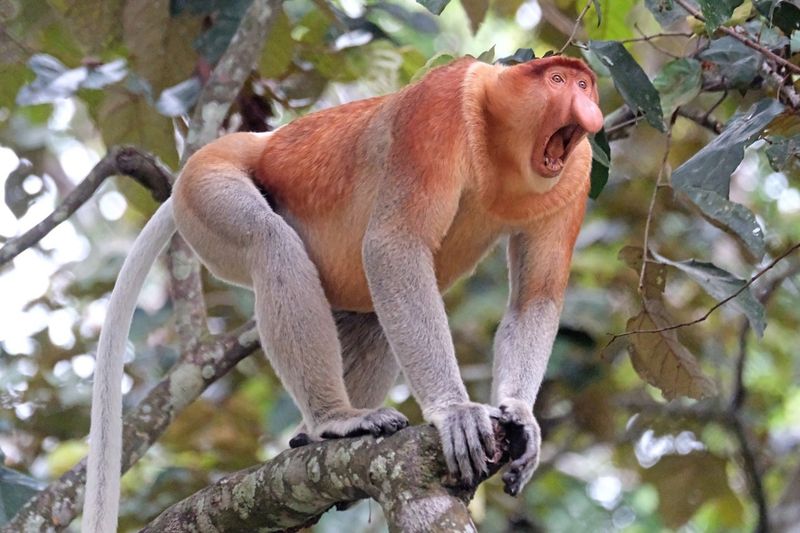
Proboscis monkeys are easily recognized by their large noses and pot-bellied appearance. Native to the rainforests of Borneo, these monkeys have a lifespan of about 15 to 20 years in the wild. In captivity, they may live slightly longer, often reaching up to 23 years.
These monkeys exhibit a unique social structure, living in groups consisting of one male and several females, or all-male bachelor groups. They primarily feed on leaves, seeds, and unripe fruits, supported by a specialized digestive system that helps break down tough plant materials.
Human activities, especially deforestation and palm oil plantation expansion, pose significant threats to their habitats. Conservation programs work to protect these monkeys by preserving their natural environments and raising awareness about their ecological importance.
The study of proboscis monkeys offers insights into the relationship between physical adaptations and lifespan, highlighting the need for habitat conservation to ensure their survival.
7. Vervet Monkey
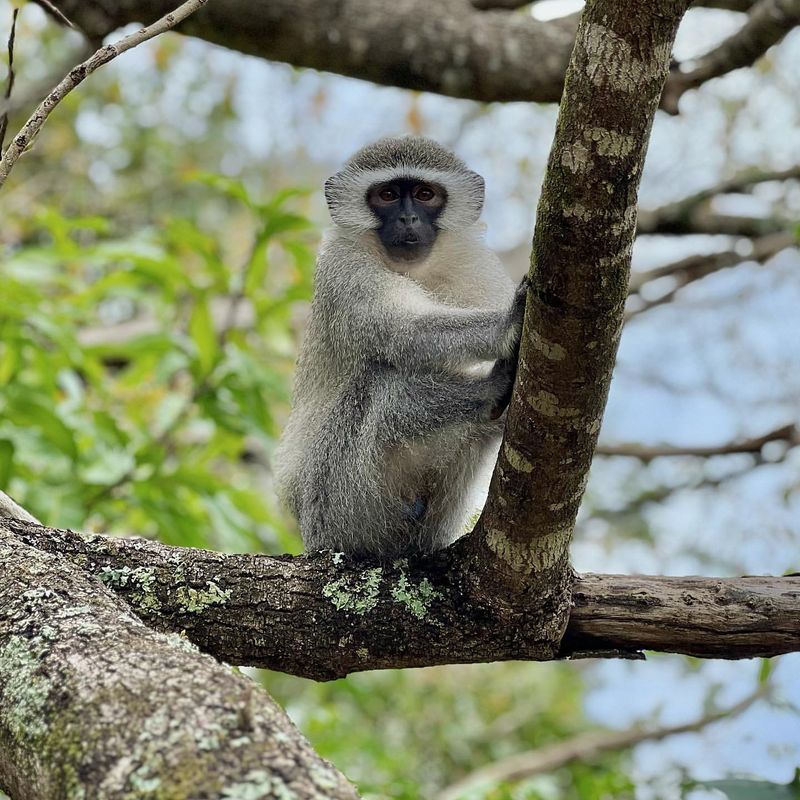
Vervet monkeys are small, agile primates known for their inquisitive nature and adaptability. They inhabit various environments, from savannahs to human-altered landscapes across southern Africa.
Vervet monkeys typically live around 12 to 24 years in the wild, depending on environmental conditions and social status. Their diet is diverse, including fruits, flowers, leaves, and occasionally small vertebrates, which provides essential nutrients for longevity.
They live in social groups that aid in protection and increase survival rates, particularly against predators like eagles and big cats. Human encroachment and habitat destruction pose threats to vervet monkeys, leading to conservation efforts that aim to preserve their habitats and mitigate human-wildlife conflicts.
By studying vervet monkeys, researchers learn about the impact of adaptability and social interactions on the lifespan of these intelligent primates.
8. Gelada
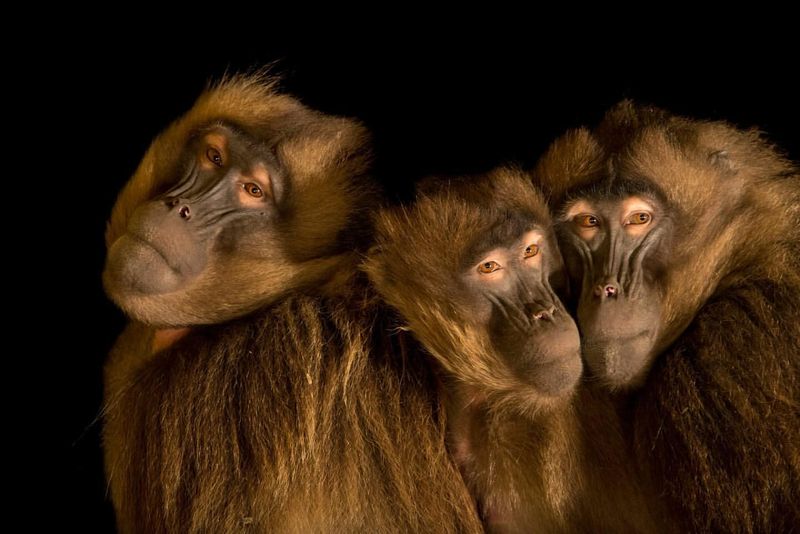
Geladas are unique among primates, known for their striking red chest patches and complex social structures. These monkeys are native to the highlands of Ethiopia and have a lifespan of about 12 to 15 years in the wild. In captivity, geladas may live longer, often reaching up to 20 years.
Geladas primarily feed on grass, a diet that is rare among primates, supported by their specialized teeth and digestive systems. Their social system is intricate, with groups forming large herds that provide protection and enhance social interaction, critical for their survival.
Habitat degradation and human disturbance are significant threats to geladas, prompting conservation efforts focused on preserving their highland habitats. Understanding geladas’ unique dietary and social adaptations offers insights into their lifespans and the importance of conserving their natural environments.
9. Snub-nosed Monkey
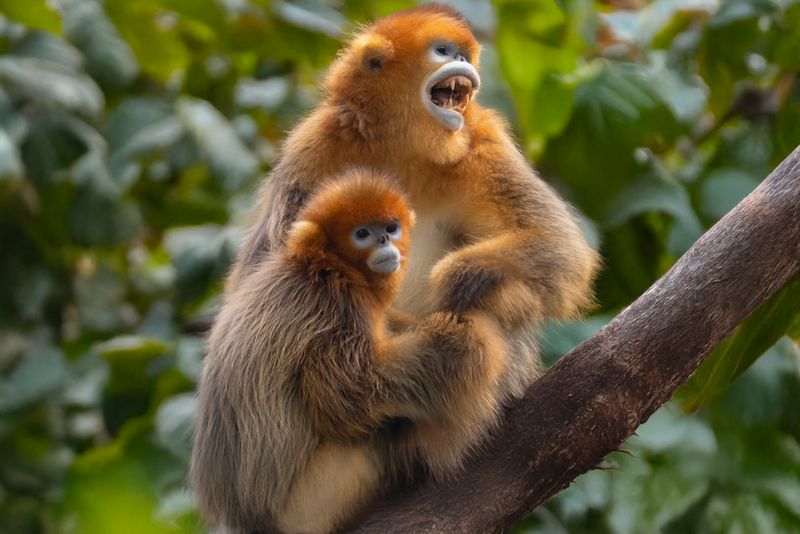
Snub-nosed monkeys are distinguished by their flat noses and vibrant fur colors. These monkeys inhabit mountainous regions in China, Vietnam, and Myanmar, typically living 15 to 20 years in the wild. In captivity, they may live slightly longer, reaching up to 22 years.
Their diets consist mainly of lichens, leaves, and fruits, providing the necessary nutrients for their survival in harsh environments. Snub-nosed monkeys live in large social groups that offer protection and enhance foraging efficiency, which is vital for their longevity.
Threats from habitat destruction and hunting have led to conservation programs aimed at protecting these unique primates and their natural habitats. Studying snub-nosed monkeys provides valuable insights into how environmental adaptations influence lifespan and the importance of habitat preservation for their continued existence.
10. Blue Monkey
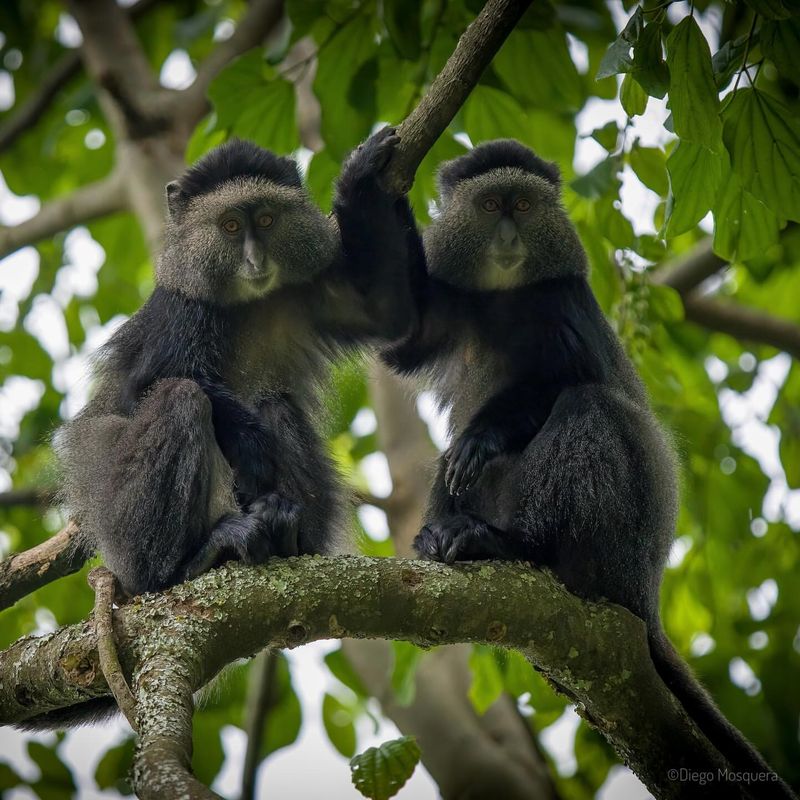
Blue monkeys are known for their gentle demeanor and beautiful bluish-grey fur. Found in central and East African rainforests, these monkeys typically live around 20 years in the wild. Captivity can extend their lifespan to about 25 years, thanks to better nutrition and care.
These monkeys are arboreal, spending most of their lives in trees, where they feed on fruits, leaves, and insects. Their social groups consist of a single male with several females and offspring, which help with resource sharing and protection.
Human activities, such as logging and habitat fragmentation, threaten blue monkeys’ environments. Conservation efforts focus on habitat protection and sustainable practices to ensure their survival. Studying blue monkeys helps us understand the impact of social structures and diet on lifespan, emphasizing the need for environmental conservation.

